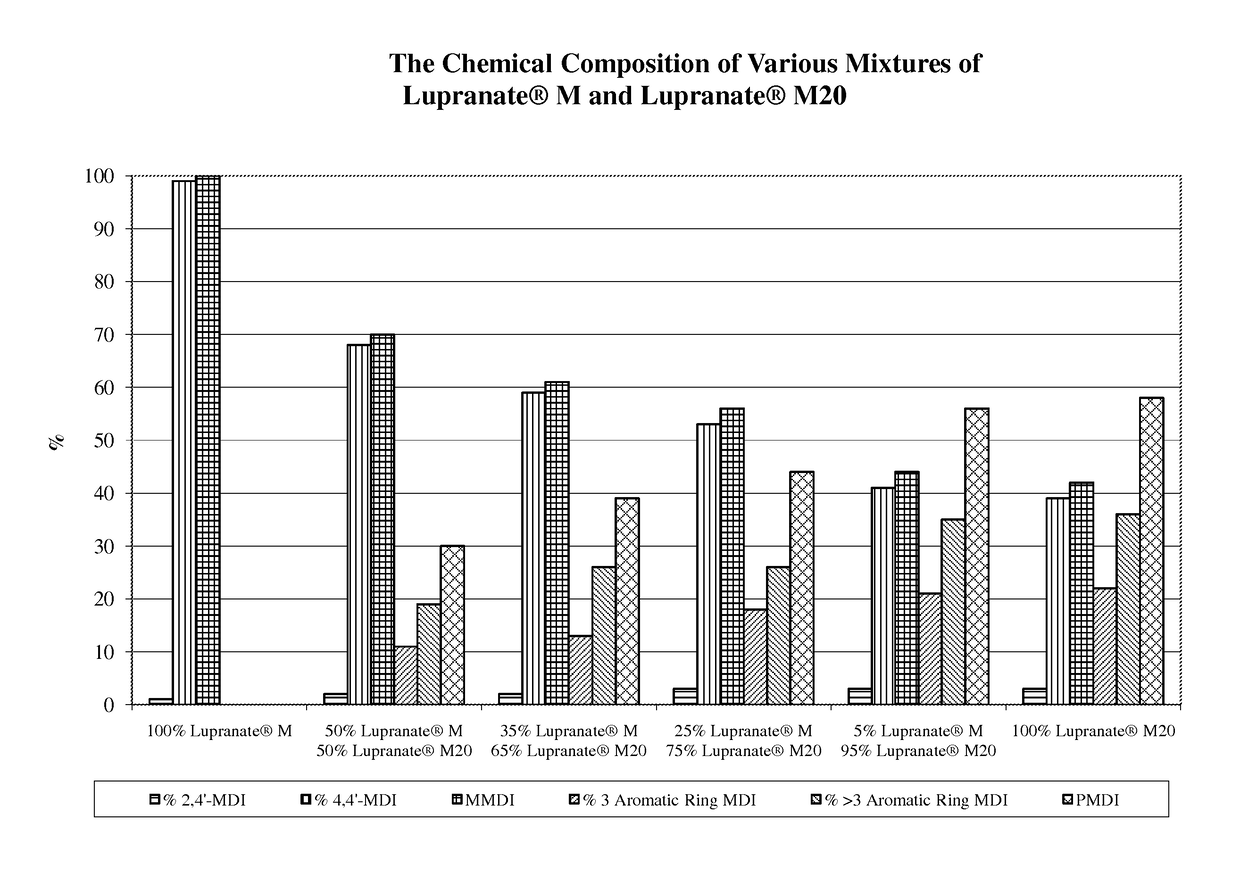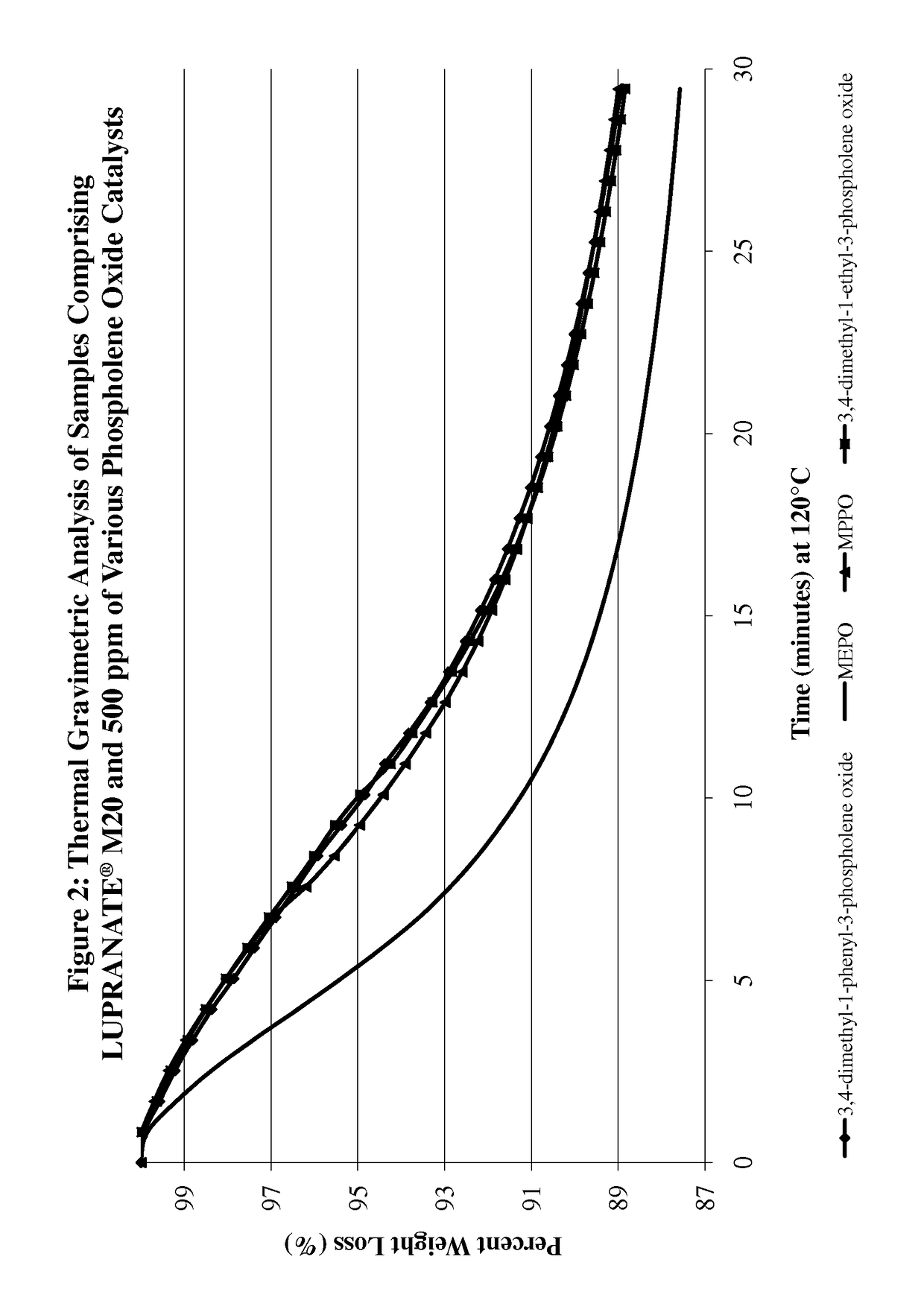Proppant
a technology of proppant and slurry, applied in the field of proppant, can solve the problems of deterioration in quality, significant underutilization of existing united states energy resources, and increasing dependence on foreign petroleum fuels, and achieve the effect of few resources
- Summary
- Abstract
- Description
- Claims
- Application Information
AI Technical Summary
Benefits of technology
Problems solved by technology
Method used
Image
Examples
example 1
[0153]Example 1 is a proppant formed according to the subject invention. To form Example 1, a polycarbodiimide coating is disposed on a particle, specifically on an outer periphery of the particle. Example 1 is compared to a comparative proppant, Comparative Example 1.
[0154]The composition of Example 1 is disclosed below in Table 1. To form Example 1, Isocyanate A and Catalyst A are mixed to form a reaction mixture. The reaction mixture, as well as Particle A, are added to a reaction vessel and agitated at a temperature of 160° C. for 20 minutes to polymerize Isocyanate A. During agitation at these conditions, the polymerized Isocyanate A forms a polycarbodiimide coating on Particle A. Next, Particle A having the polycarbodiimide coating formed thereon is heated, i.e., post-cured, at a temperature of 200° C. for 45 minutes to cure the polycarbodiimide coating, whereby crystallinity and hardness are built. As such, Example 1 is a proppant that comprises Particle A and the polycarbodi...
examples 2-17
[0159]Examples 2-17 are also proppants formed according to the subject invention. Examples 2-17 are formed with the components disclosed in Table 2. Examples 2-17 are proppants comprising a polycarbodiimide coating disposed on Particle A. Particle A is activated with Adhesion Promoter A by pre-coating Particle A with Adhesion Promoter A prior to coating with the polycarbodiimide coating. If an isocyanate of a given Example comprises a mixture of isocyanates, the mixture of isocyanates is mixed thoroughly. To form Examples 2-17, the isocyanate and Catalyst A are added to a reaction vessel to form a reaction mixture and the reaction mixture is mixed and heated to 110° C. for 5 minutes. Next, Particle A is added to the reaction vessel and agitated, with the reaction mixture, at a temperature of approximately 123° C. (approximately 250° F.) for 6 minutes to (1) uniformly coat the surface of Particle A with the reaction mixture and (2) polymerize the particular isocyanate or isocyanates....
examples 18 and 19
[0167]Examples 18 and 19 are also proppants formed according to the subject invention. To form Examples 18 and 19, an isocyanate and Catalyst A are mixed to form a reaction mixture. More specifically, 140 g of the isocyanate are mixed with a quantity of Catalyst A such that 500 ppm 3-methyl-1-phenyl-2-phospholene oxide is included in the reaction mixture. The particular isocyanates and the amounts used are disclosed in Table 3. The reaction mixture is heated at 105° C. for 60 minutes and a polycarbodiimide coating is formed. The polycarbodiimide coating, in a molten state, is cooled to a solidified, thermoplastic-like, crystalline state and is powderized.
[0168]The isocyanates of Examples 18 and 19 are described below in Table 3. The amounts in Table 3 are in percent by weight based on a total combined weight of the isocyanates.
[0169]
TABLE 3Example 18Example 19Isocyanate B0%65%Isocyanate C100%35%
[0170]Particle A is activated with Adhesion Promoter A by pre-coating Particle A with Adh...
PUM
| Property | Measurement | Unit |
|---|---|---|
| temperatures | aaaaa | aaaaa |
| temperature | aaaaa | aaaaa |
| pressures | aaaaa | aaaaa |
Abstract
Description
Claims
Application Information
 Login to View More
Login to View More - R&D
- Intellectual Property
- Life Sciences
- Materials
- Tech Scout
- Unparalleled Data Quality
- Higher Quality Content
- 60% Fewer Hallucinations
Browse by: Latest US Patents, China's latest patents, Technical Efficacy Thesaurus, Application Domain, Technology Topic, Popular Technical Reports.
© 2025 PatSnap. All rights reserved.Legal|Privacy policy|Modern Slavery Act Transparency Statement|Sitemap|About US| Contact US: help@patsnap.com



